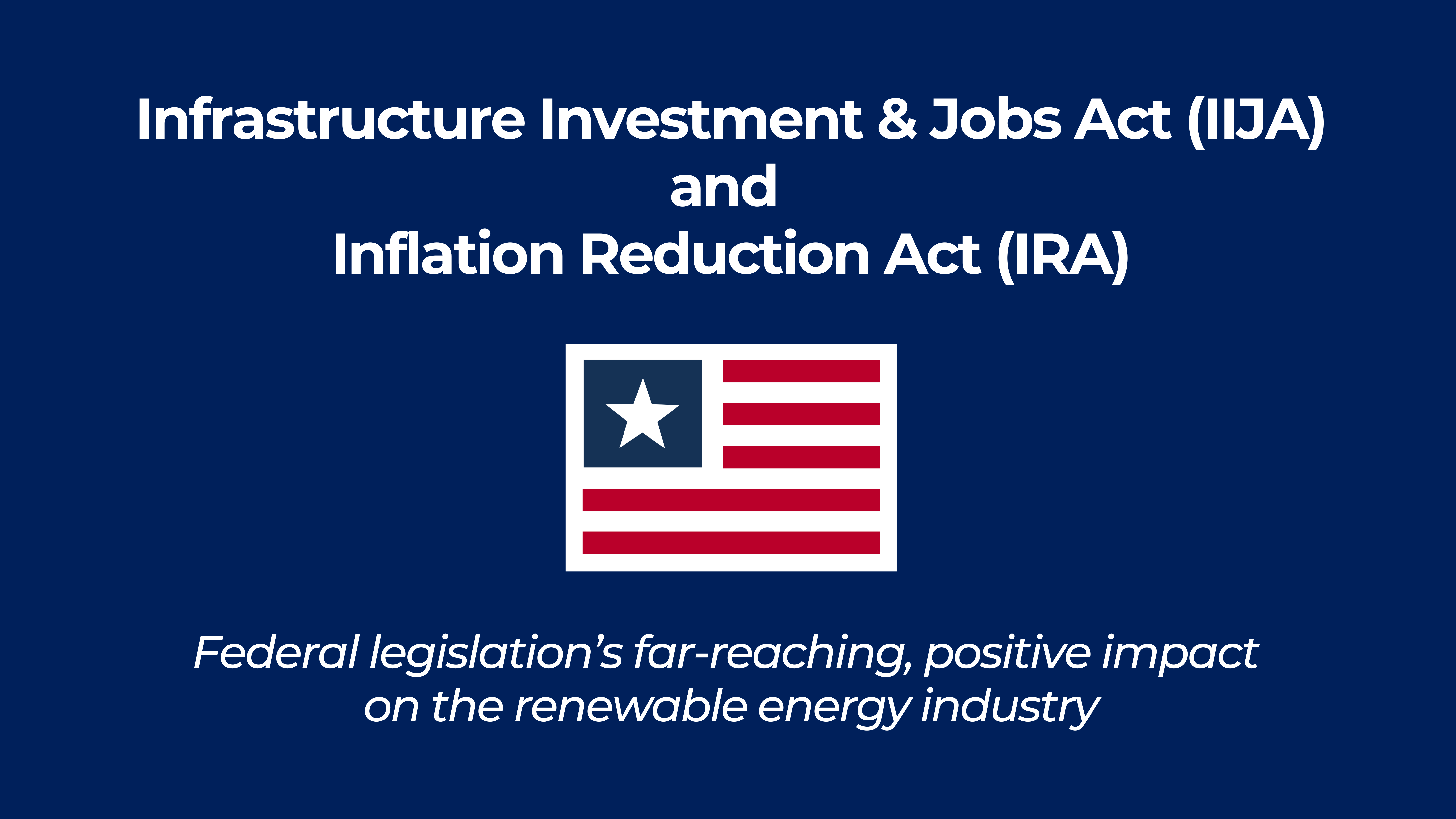Working with EPCs — End-to-End Renewable Energy Engineering Learn More
What the IIJA and IRA mean for the renewable energy industry

The impact of the Infrastructure Investment and Jobs Act (IIJA), signed into law in November 2021, and the Inflation Reduction Act (IRA), enacted in August 2022, can’t be overstated. Collectively, this federal legislation will yield massive investments in new or expanded renewable energy programs, grants and tax credits. Over $100 billion of these investments have already materialized, and the industry is already reaping the benefits.
The majority of the funds are planned for states like California with the most extensive decarbonization goals and mandates, and states like Florida and Texas, that have an abundance of renewable resources as well as lower permitting and siting costs. In 2024 alone, the government projects a 17% increase in renewable deployment—to 42 gigawatts (GW), almost a quarter of the nation‘s electricity generation.
A major boost to solar and storage
The solar and storage industries appear to gain the most from the IIJA and IRA:
- In 2023, U.S. solar and storage companies announced more than $100 billion in new private sector investments and the creation or expansion of 51 solar manufacturing facilities.
- Since passage of the IRA, 155 GW of new production capacity has been announced across the solar supply chain, including:
- 85 GW of solar modular capacity
- 43 GW of solar cells
- 20 GW of silicon ingots and wafers
- 7 GW of inverter capacity
- 165 GWh of energy storage manufacturing capacity has been announced across 14 new or expanded facilities
- By 2033, the U.S. will have installed 669 GW of total solar capacity—more than 4 times the amount installed today.
- By 2031, solar energy will produce more electricity each year than all U.S. coal-fired power plants in 2022.
- The solar industry’s annual CO2 emissions offsets will increase from 169 million metric tons (MMT) today to more than 459 MMT by 2033.
Greater potential for the clean hydrogen economy
Hydrogen is a promising tool in reducing greenhouse gas emissions and helping the U.S. reach net-zero by 2050. It has huge potential as a low- or zero-carbon fuel for transportation, industrial production, power generation and energy storage. To reap these decarbonizing benefits, however, current hydrogen production will have to shift to a cleaner and more affordable approach.
IIJA calls for an $8 billion investment to jumpstart deployment of clean hydrogen production at scale. The legislation mandates the first-ever incentive for clean hydrogen production: up to $3 of credit for every kilogram produced that meets a carbon intensity threshold.
Additional legislation (the bipartisan 2023 Omnibus Appropriations Bill) has provided for federal funds to create regional clean hydrogen hubs and offer clean hydrogen production incentives and support for new research.
New investments in energy storage
The IIJA calls for significant investment in energy storage. These funds include $6 billion in grants from DOE’s Office of Energy Efficiency and Renewable Energy for processing, manufacturing and recycling battery materials, as well as $505 million in grants or cooperative agreements from DOE’s Office of Clean Energy Demonstration to carry out energy storage demonstration projects.
For the first time ever, the storage industry now has a federal investment tax credit (ITC), and battery storage installations are projected to exceed 10 GW per year for the foreseeable future. The industry expects to see future investment in developing new technology for grid energy storage, including both lithium- and non-lithium-based batteries and their components.
Exciting prospects for Blymyer
The IIJA and IRA have proved to be the most significant environmental legislation in history. The huge government investment is creating considerable momentum across the entire renewable energy industry. At Blymyer, we’re already seeing the effects—an increase in demand for our design and engineering services,” says Mike Rantz, Blymyer President.
“We’re seeing growth in all areas (solar, wind, EV charging, BESS, and substations), and not just in California but nationwide,” continues Rantz. “The new funds are driving innovation, and the renewable energy industry continues to evolve in exciting ways. The Blymyer team is proud to be helping speed the transition to cleaner energy.”